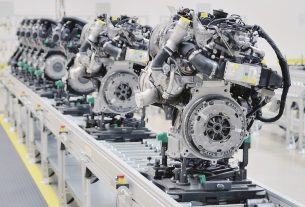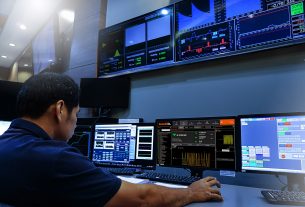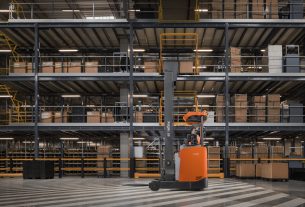Haider Al Kaleedy, Manager, Visual Components
The manufacturing sector is undergoing transformative change. The rise of Industry 5.0 has reflected the trend towards a working environment that places humans at the forefront, as well as circular production models to help ensure a sustainable future. But there’s a significant amount of work to be done before many businesses get to where they need to be. Almost one-in-three (30%) manufacturers are concerned by a lack of in-house skills for using automation and robotics, and a staggering 70% believe that the current economic climate is a detriment to their sustainability strategies. To ease fears, it’s up to technology to drive innovation and efficiency in 2023 and beyond.
Continued challenges
Manufacturing organisations have faced a blend of macro and micro challenges this year. Driven by supply chain constraints, increased costs due to rising inflation and sustainability concerns, reshoring is on the agenda. Additionally, the once low-cost strategy of shifting manufacturing to countries in Asia has now become more expensive, and the extended lead times that materialised during the pandemic have encouraged decision-makers to explore alternatives to avoid the same situation in the future.
With more businesses bringing operations back to the country of origin, are their premises fully prepared to deal with an influx in production capacity, and is in-house talent ready to manage these operations? The skills shortage is another trend that shows little sign of abating, both this year and the next. A study by Deloitte and The Manufacturing Institute discovered that 2.1 million manufacturing jobs could go unfilled in the US by 2030. On top of that, there’s the issue of sustainability targets and ensuring green practices that contribute to reduced energy use and lower carbon emissions.
Uptake of new technologies
It’s perhaps unsurprising that these developments have led to more businesses exploring the value of automation and robotics to increase efficiencies, upskill in-house talent and drive throughput. This is no doubt a trend which will ramp up over the coming years. Industrial robots provide value via tasks such as welding, cutting, polishing and painting of items on the production line, all in an automated and rapid fashion.
Cobots, or collaborative robots, can then provide their own value by working with humans to complete lightweight applications such as material handling. Their ability to be moved around means they have the flexibility to be applied to other tasks such as picking and placing, and they are usually more cost-effective.
Cobots and robots can work together to enhance efficiencies on the factory floor, but programming deployments can be a time-intensive manual process and investment in these technologies can be hard to justify to the board. To confidently bring in such equipment, organisations hoping to make progress in their Industry 5.0 roadmaps can make use of simulation software to prove their value. This technology can for example calculate how many assembled products a cobot can complete over a set period of time, helping to justify outlay in a time of stretched budgets and hesitancy among the C-suite to invest in new solutions.
Digital twins and virtual commissioning
Two major features of simulation software are digital twins and virtual commissioning, which are key solutions in the growth of the industrial metaverse and will become part of the toolkit for more organisations in the future.
With digital twinning, two way communication between the real manufacturing environment and a virtual recreation means that manufacturers can test new deployments and their impact on operations, such as robots or cobot integrations. This way, all testing is completed in a risk-free sandbox environment that avoids the need for any downtime to physical systems. As an extension of digital twinning, virtual commissioning can allow commissioned hardware to be tested for its impact within the software before deployment. Organisations can ensure optimum uptime of their reshored operations.
Simulation tools, combined with offline robot programming (OLP) to avoid time-consuming manual programming of robots, can help upskill humans in digital applications and plug the skills shortage. An intuitive library of pre-defined components can encourage employees to build their capabilities and put themselves at the forefront of Industry 5.0 innovation. Effective programming of robots with these tools can also prevent the need for products to be reworked on the production line, helping to reduce energy use. The collaborative nature of the technology can also enable more remote meetings and avoid the need for emissions-heavy car or plane travel.
A bright future
Manufacturers face a myriad of modern challenges in 2023 and beyond, such as increased costs, skills shortages and blockers to sustainability, but each can be overcome with the right technology deployments. While negative trends have placed pressure on operations, those who prioritise investment in digital twins, virtual commissioning and OLP technologies are in prime position to make the most of efficiency-enhancing robots and cobots on the factory floor. Humans can also become more of a central focus in manufacturing innovation as the industry moves into the Industry 5.0 era.





